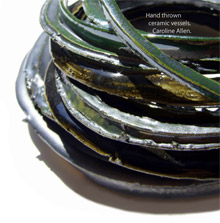Sebastian Becker and Tim Flohr Sørensen (University of Cambridge and University of Aarhus)
This paper departs from the long-standing contention that repetition is an integrated aspect of creativity and creative procedures (Tarde 1890). This offers a productive framework for exploring variability and variation in assemblages of seemingly similar archaeological artefacts and a critical perspective on the dogma of typology as an expression of cultural coherence and convention. We conceive creativity as people’s embodied exploration of material qualities within historically situated environments. As such, creativity provides an entrée into reconceptualising material variability, similarity and difference, by widening our analytical scope beyond exclusively visual/formal criteria. In particular, we are interested in how people’s creative engagement with material culture engenders objective relationships in relation to sensory cues and effects. For us, the ultimate aim of engaging with creativity as an analytical concept is to gain a fuller appreciation of how people constructed material realities as sensorily conscious agents, thus providing a novel way of approaching ontological alterity.
To illustrate our argument we shall discuss bird representations on Late Bronze and Early Iron Age metalwork (ca. 1300 – 500 BC) in terms of their design and distribution across different types of objects. Bird motifs invariably transgress typological schemes by being combined creatively across artefactual ‘types’, sensory regimes and iconographic repertoires. We argue that this body of evidence is not reducible to variations on a theme, but should be appreciated as a deliberate attempt at cultural critique of tradition and normativity expressed through design idioms.


